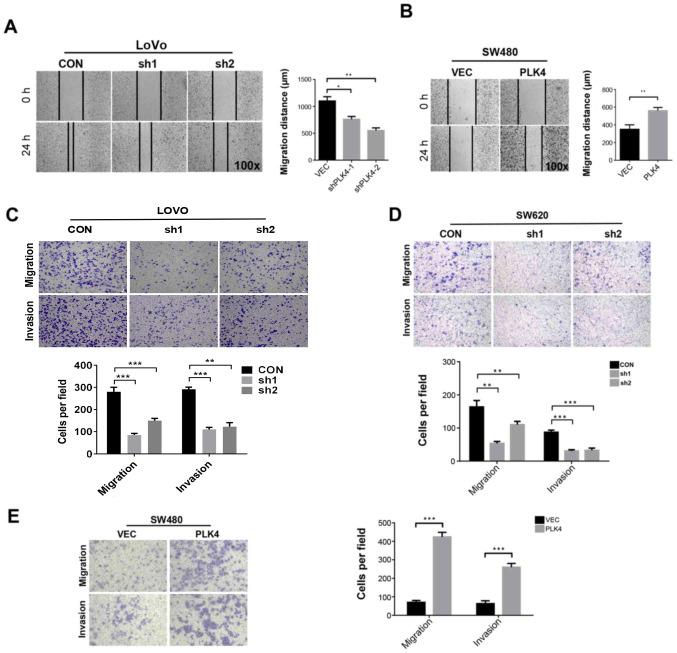Int J Oncol 54: 479-490, 2019; DOI: 10.3892/ijo.2018.4659
Subsequently to the publication of the above article, and a Corrigendum that has already been published with the intention of showing the corrected version of Fig. 5 (DOI: 10.3892/ijo.2021.5213; published online on May 5, 2021), the authors have realized that only the data for Fig. 5C needed to be corrected with respect to the original figure published in the article, and there was no need to have presented replacement data for Fig. 5E in the previous Corrigendum.
Figure 5.
PLK4 promotes migration and invasion of colorectal cancer cells. (A) Effects of PLK4 knockdown on LoVo cell migration, as evaluated by wound scratch assay. (B) Effects of PLK4 overexpression on SW480 cell migration, as evaluated by wound scratch assay. (C) Effects of PLK4 knockdown on LoVo cell migration and invasion, as evaluated by Transwell assay. (D) Effects of PLK4 knockdown on SW620 cell migration and invasion, as evaluated by Transwell assay. (E) Effects of PLK4 overexpression on SW480 cell migration and invasion, as evaluated by Transwell assay. Results are presented as the means ± standard error of the mean of triplicate repeats from three independent experiments. *P<0.05, **P<0.01, ***P<0.001. CON, control; CRC, colorectal cancer; PLK4, polo-like kinase 4; sh/shRNA, short hairpin RNA; VEC, empty vector.
The further revised version of Fig. 5, featuring the corrected data for Fig. 5C, is shown on the next page. All the authors agree to this Corrigendum. Note that the revisions made to this figure do not adversely affect the results reported in the paper, or the conclusions stated therein. The authors regret that Fig. 5 was not presented in its finally revised form in the previous Corrigendum, and offer their apologies to the Editor and to the readers of the Journal.



